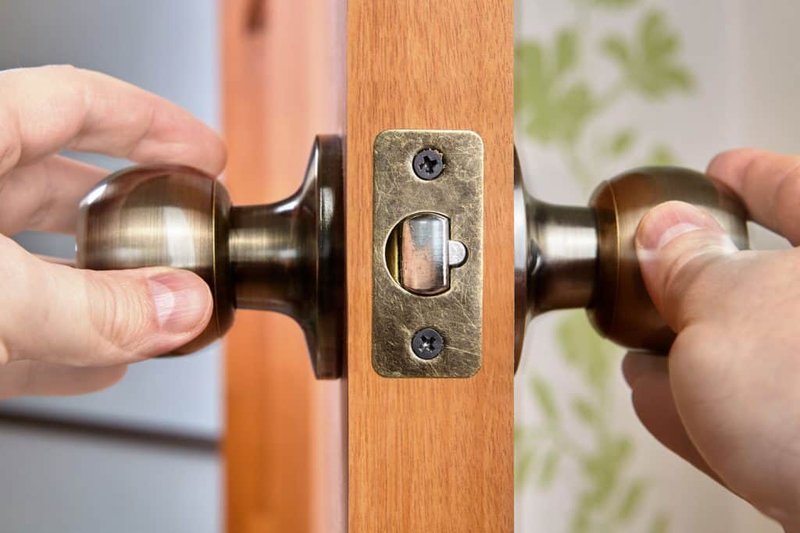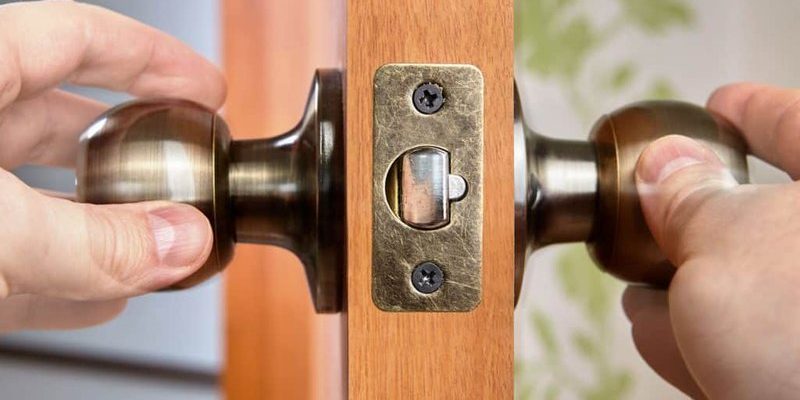
Deadbolts are pretty straightforward, whether you’re working with a basic keyed model or a higher-tech brand like Kwikset or Schlage. If you notice your deadbolt doesn’t sit tight in the door jamb anymore, you’re not alone. This issue pops up in apartments, older homes, and even with fairly new hardware. Let’s break down why it happens, what you can do, and when it might be worth calling in backup.
How a Deadbolt Works—and Why Tight Fit Matters
To figure out why your deadbolt feels loose, it helps to picture how the whole system works. A deadbolt isn’t just the metal piece you turn with your key. There’s a bolt (the part that slides in and out), a lock cylinder, and a strike plate—the metal piece attached to the door jamb where the bolt nestles when the door is locked. When everything lines up and fits snugly, the deadbolt keeps your door secure and your nerves calm.
Here’s the thing: even a little looseness can cause problems. That “wiggle” means the bolt isn’t locking as securely as it should. Over time, the metal strike plate can shift or the screws holding it in place might loosen. In some cases, the door frame itself might swell or shrink (hello, humidity and old wood) and throw everything out of alignment. If you ignore it, you risk lockouts, jamming, or—worse—a weak lock that someone could force open more easily.
A tightly-fitted deadbolt keeps your home safer and helps avoid those frustrating moments when your key just will not turn. If you’re noticing a loose fit, it’s worth sorting out now before the problem gets worse.
Common Causes of a Loose Deadbolt in the Door Jamb
Honestly, a deadbolt doesn’t just come loose out of nowhere. There are a few main reasons why this happens, and knowing which one you’re facing can save a ton of time. Usually, it comes down to four culprits: loose screws, worn strike plates, door frame movement, or a misaligned bolt.
- Loose screws: Over time, the screws holding your strike plate or lock hardware can wiggle loose just from daily use.
- Worn strike plate: The hole where the deadbolt sits in the door jamb—the strike plate—can get worn out, making it feel like your deadbolt is floating rather than locking.
- Moved door frame: Changes in weather, house settling, or slamming doors can cause your frame to shift, and suddenly, the deadbolt no longer fits snugly.
- Misaligned deadbolt: If the bolt and strike plate aren’t perfectly lined up, the deadbolt can never lock tightly—sometimes it just barely enters the hole.
You might be wondering, “How can I tell which problem I have?” Good question. Start by opening your door and eyeballing the strike plate. Check for stripped screws, gaps, or movement. If the bolt clicks smoothly but still feels loose when the door’s closed, the strike plate or the frame is probably the main culprit.
Diagnosing the Source of the Looseness
Let me explain how you can pinpoint exactly where things are going wrong. Grab a flashlight and take a closer look at the deadbolt when the door is both open and closed. Notice if the bolt slips all the way into the jamb or if it stops short. If you see gaps between the bolt and the strike plate, that’s your red flag.
Next, test the deadbolt’s movement. When the door is open, turn the key or thumb-turn and watch how the bolt moves in and out. Does it feel smooth, or does it drag? If you notice the bolt wobbles before it locks, the mechanism inside the lock could be part of the problem—though that’s less common.
Now, close the door and lock it. If you feel resistance or hear a clunk before it clicks into place, your door frame or strike plate might not be lined up properly. Sometimes you’ll spot shiny marks around the strike plate—these show where the bolt has been rubbing or missing the hole.
Don’t rush through this step. A few minutes of careful checking can save you from wasting time on fixes that don’t address the real problem.
How to Tighten a Loose Deadbolt: Step-by-Step Fixes
Ready to get hands-on? Here’s how to tighten up a deadbolt that feels loose in the door jamb. All you’ll need are some basic tools—usually just a screwdriver, a flashlight, and maybe a new set of screws.
- Check and tighten all screws. Open the door and use a screwdriver to snug up the screws on both the strike plate and the deadbolt mechanism inside the door. Stripped or spinning screws? Swap them for slightly longer ones that bite deeper into the wood.
- Inspect the strike plate. Look for signs of wear or looseness. If the strike plate wobbles or the hole is too big, replace it. Universal strike plates are available at most hardware stores and fit nearly all deadbolt brands.
- Adjust the strike plate position. Sometimes, shifting the strike plate up, down, or sideways by just a couple of millimeters can help the bolt fit snugly. Unscrew it, test-fit the bolt, and mark the ideal spot before re-attaching the plate.
- Fill in worn jamb holes. If the strike plate hole is too big or splintered, fill it with wood filler or glue in a slim wood dowel, then drill a fresh pilot hole for the screws. This gives everything a tight, secure fit.
Take your time with each step. Rushing can lead to stripped screws or a crooked plate, and then you’re right back where you started.
When to Replace vs. Repair Your Deadbolt Hardware
You might be wondering if it’s even worth trying to fix a loose deadbolt—or if you’re better off just replacing the whole thing. Here’s the honest answer: if the hardware is in decent shape and the door frame isn’t damaged, a repair is usually more than enough. Just tighten things up, maybe swap a screw or two, and you’re set.
But if your deadbolt is old, rusted, or the internal mechanism feels mushy or unpredictable, replacement might be the smarter move. The same goes for a strike plate that’s bent, warped, or cracked. It’s not just about looks—old hardware can be a weak point in your home’s security, and that’s not worth risking.
Some people opt for higher-security brands like Schlage or digital deadbolts with features like auto-lock or code entry. These options can be a little pricier, but they’re often more durable and come with longer screws, thicker plates, and beefier bolts. If you’re thinking about a switch, don’t be afraid to compare models side-by-side at your local store.
Special Cases: Door Material and High-Tech Deadbolts
Not every door is created equal. For example, if your door is metal or fiberglass, the approach will be different than with a classic wood door. Metal doors sometimes need special screws or strike plates, while with fiberglass, drilling new holes can be a delicate process.
If you’ve got a smart deadbolt—think electronic keypad models from brands like August, Kwikset, or Yale—double-check the installation instructions. Some digital locks use batteries and electronic parts that sit inside a special housing, and the mounting can work itself loose in different ways than old-school locks do.
If you ever feel unsure, especially when working with expensive or unfamiliar locks, don’t sweat it—sometimes calling a pro locksmith is the best way to avoid a bigger headache.
Preventing Future Deadbolt Looseness
Nobody wants to repeat this fix every few months. Thankfully, with a few habits and tiny upgrades, you can keep your deadbolt (and your nerves) steady for years.
- Check the screws every few months. Make a habit of giving all lock hardware a quick tighten when you clean or change batteries (if you’ve got a digital lock).
- Use longer screws. Swap the default strike plate screws for 2–3 inch wood screws. They dig into the door frame’s studs and hold everything firmer.
- Keep the door aligned. If you notice the door sags or rubs, adjust the hinges or weatherstripping to keep the lock and strike plate lined up.
- Don’t slam the door. It’s tempting, especially on a tough day, but repeated slamming is a fast way to loosen your deadbolt again.
Small fixes now can save you time—and another wiggly, annoying deadbolt—later.
What to Do If Your Deadbolt Still Feels Loose After Troubleshooting
At this point, if you’ve tightened the screws, replaced the strike plate, and checked the alignment but your deadbolt still moves in the door jamb, it’s time to look deeper. The issue could be hidden damage in the door frame, stripped-out wood, or even a faulty lock mechanism that’s not visible from the outside.
If you’re still stuck, here’s what you can try next:
- Remove the deadbolt and inspect the door’s edge. Look for cracks or chunks missing where the bolt enters the door jamb.
- Consider professional repair. For frames that are split or too damaged for filler, a carpenter or repair pro will know how to reinforce or replace the weak area.
- Upgrade the hardware. Sometimes, nothing beats a fresh start with new hardware that fits tightly from the get-go.
Don’t be discouraged—a deadbolt that feels loose in the door jamb is a super common problem, and it’s usually fixable. With a bit of patience and the right approach, you’ll get your lock feeling rock-solid again.
A snug, secure deadbolt isn’t just about safety. It’s about peace of mind, every time you close your door.
Wrapping things up, dealing with a loose deadbolt might seem like a hassle at first, but it’s pretty manageable once you break down the steps and understand what’s really going on inside the door. Whether your lock is a classic Schlage, a modern touchscreen, or a no-name brand that came with the apartment, keeping it tight in the door jamb means less fuss, less worry, and a safer, quieter home. That’s always worth a few minutes with a screwdriver.
